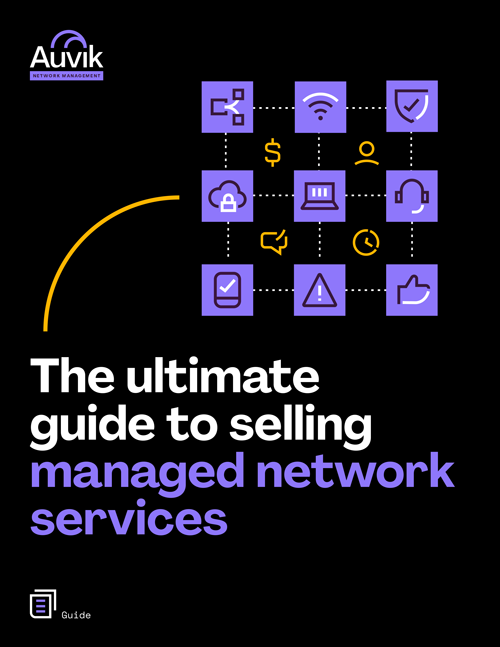It’s safe to say that modern working conditions have changed the way IT teams interact with end-users. Remote work has lengthened the distance between users and the help desk in the literal sense. So how can we make sure that there is a good rapport between IT and the users they work hard to keep productive? Network visibility can help.
The situation
Maybe you’ve faced this situation before: you get a ticket that lacks context but sounds urgent. You reach out to the end-user but they can’t provide enough clarity on the situation or they don’t know the technical terms to help. After a long struggle with turning things off and on again, trying some common commands, or doing a refresh, the user is back to work, but you feel you’ve lost time in your day on what could have been easily or remotely resolved.
It’s a frequent scenario for many IT pros. If you can’t see the full picture, it can be hard to understand the needs of the other party. For those operating the help desk, it may seem like no end-user has enough patience or puts enough thought or context into tickets, and for end-users, it can seem like IT is intimidating to approach or even grumpy! But we can work together and use tools to help foster healthy communication from IT to the people they support and keep productive.
The solution
In Jakob Nielsen’s 10 heuristics, he lays out the importance of communication for user experience with three simple focuses:
- Communicate clearly to users what the system’s state is—no action with consequences to users should be taken without informing them.
- Present feedback to the user as quickly as possible (ideally, immediately).
- Build trust through open and continuous communication.
These principles can be applied to the relationship between IT teams and the users they work with too. It’s necessary to keep the end user informed before taking actions that could have an impact on them. Offering feedback or instructions to make changes should be done as quickly as possible to prevent further issues. Lastly, focus on building a strong working relationship with the end-user by maintaining communication.
How does network visibility factor in?
With a tool that can give insight into the status of the network your people are connected to (especially a user-friendly software like Auvik Network Management), IT can stay informed about those connections as they change. Real-time alerting and monitoring are the key. That way, the end-user becomes more visible to IT, and IT can keep the end-user in the loop with what happens on the network.
It also happens that network monitoring software can provide “immunity” to IT when needed because, with better network visibility, IT will have insight when an issue is network or ISP related. This allows IT pros to alleviate some pressure if and when downtime does occur.
And this isn’t just applicable to internal IT departments. MSPs need the same communication principles because they are another important link in the chain, either sending information to the internal IT partners, or again, to the end-users themselves.
The next steps
If your IT doesn’t have access to network monitoring tools, there are still solutions. Keeping communication principles in mind is one way to manage the relationship with end-users.
- Be clear and concise. Use the most direct methods and the simplest steps before escalating. You wouldn’t put anyone on a bike without putting training wheels on it first.
- Meet the user where they’re at. Similar to the above, if a user comes to you entirely unprepared, be understanding. Or if someone has more technical skills, offer them some more advanced feedback.
- Be patient with mistakes. Everyone is human, and we all encounter issues or make the occasional mistake. It’s important to have empathy for the end-user the same way you’d want the end-user not to rush you for a solution.
- Keep communication consistent. The best way to stay ahead of issues is by letting users know you are aware when there might be something wrong. It will save you repetitive tickets and lead to more trust.
- Practice being proactive. Everyone wants to achieve a proactive outlook, and it might not always be available when your day-to-day is full of fire-fighting. If you can, keep common problems and solutions documented so you can resolve the most frequently occurring issues a little faster the second and third time around.
Network visibility is one way to open the lines of communication between IT and the end-user. Visibility into IT processes and consistent messaging from IT teams will mitigate confusion and frustration on the user’s end. We all want to work in an environment that doesn’t feel hostile. Let’s come together to make ticket resolution a joint effort in communicating.
–
It’s important to keep the focus on end-user experience when you’re part of the help desk team. That’s one reason to let Auvik’s network monitoring and management software do the heavy lifting of documenting, discovering, and alerting when the network changes. When there’s more clarity about what’s happening on the network, there’s more time for prioritizing proactive solutions and big projects. Take Auvik for a 14-day free spin and see the difference true network visibility and control can make.
Your Guide to Selling Managed Network Services
Get templates for network assessment reports, presentations, pricing & more—designed just for MSPs.





